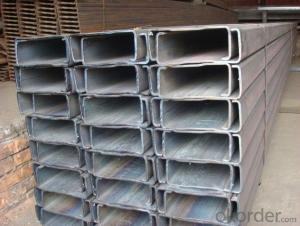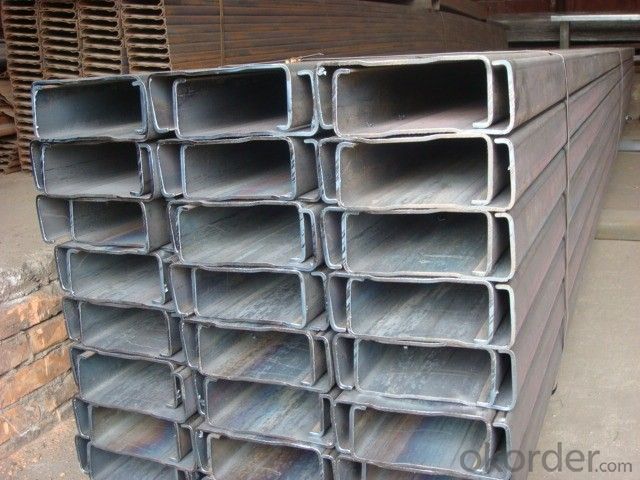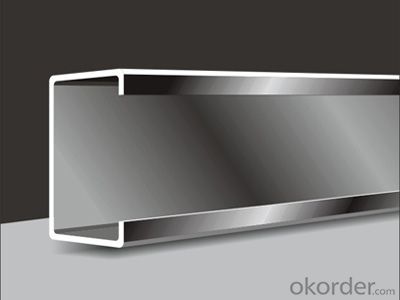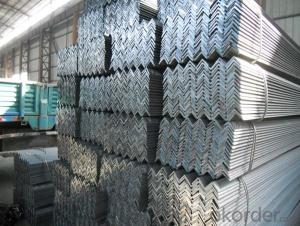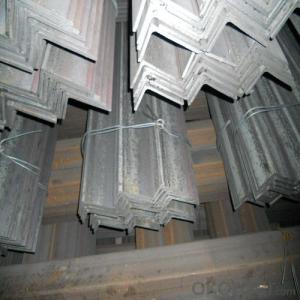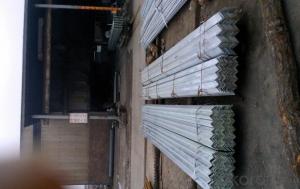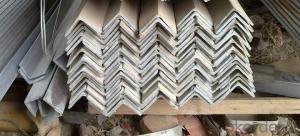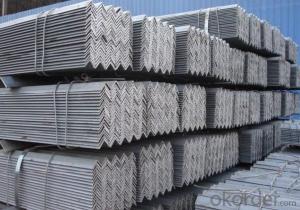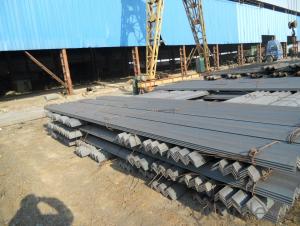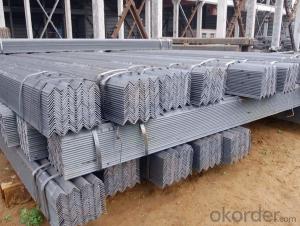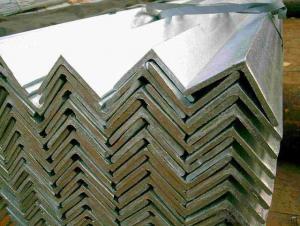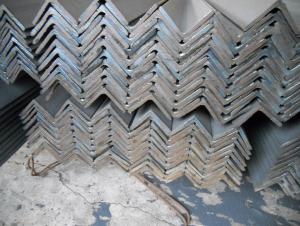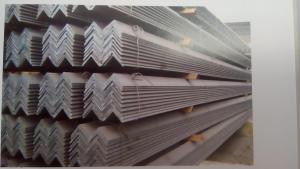20MM-250MM stainless steel angle for construction
- Loading Port:
- Tianjin
- Payment Terms:
- TT OR LC
- Min Order Qty:
- 10000 m.t.
- Supply Capability:
- 2000000 m.t./month
OKorder Service Pledge
OKorder Financial Service
You Might Also Like
Specification
Product Description:
OKorder is offering 20MM-250MM stainless steel angle for construction at great prices with worldwide shipping. Our supplier is a world-class manufacturer of steel, with our products utilized the world over. OKorder annually supplies products to European, North American and Asian markets. We provide quotations within 24 hours of receiving an inquiry and guarantee competitive prices.
Product Applications:
20MM-250MM stainless steel angle are ideal for structural applications and are widely used in the construction of buildings and bridges, and the manufacturing, petrochemical, and transportation industries.
Product Advantages:
OKorder's Steel angle are durable, strong, and resist corrosion.
Main Product Features:
· Premium quality
· Prompt delivery & seaworthy packing (30 days after receiving deposit)
· Corrosion resistance
· Can be recycled and reused
· Mill test certification
· Professional Service
· Competitive pricing
Product Specifications:
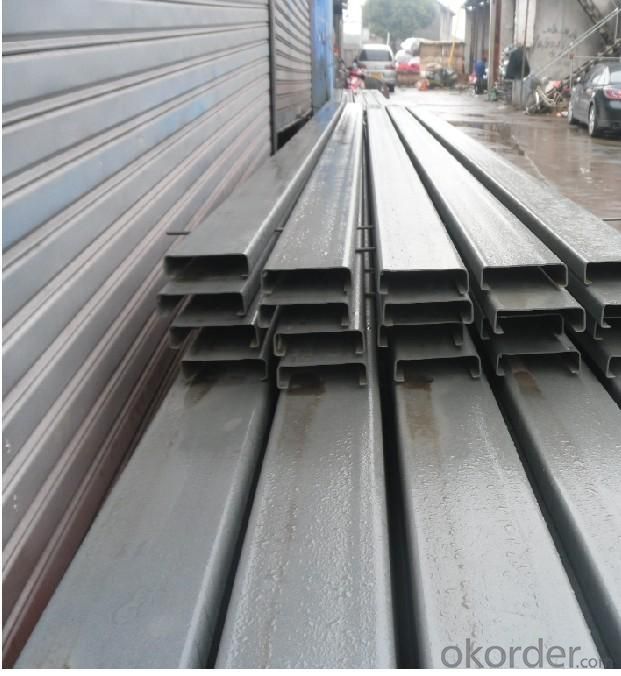
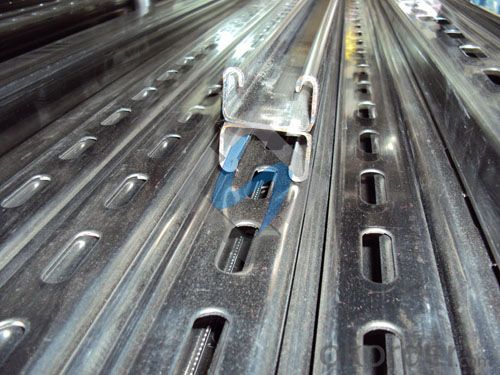
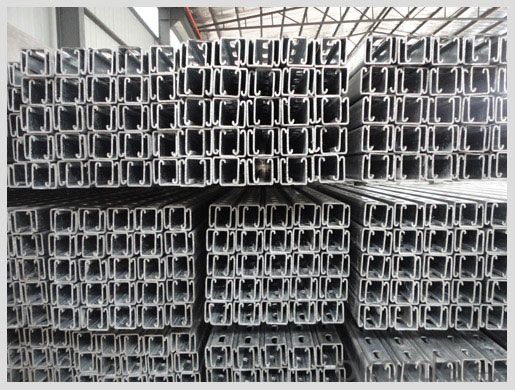
FAQ:
Q1: Why buy Materials & Equipment from OKorder.com?
A1: All products offered byOKorder.com are carefully selected from China's most reliable manufacturing enterprises. Through its ISO certifications, OKorder.com adheres to the highest standards and a commitment to supply chain safety and customer satisfaction.
Q2: What makes stainless steel stainless?
A2: Stainless steel must contain at least 10.5 % chromium. It is this element that reacts with the oxygen in the air to form a complex chrome-oxide surface layer that is invisible but strong enough to prevent further oxygen from "staining" (rusting) the surface. Higher levels of chromium and the addition of other alloying elements such as nickel and molybdenum enhance this surface layer and improve the corrosion resistance of the stainless material.
- Q: What are the common uses of unequal steel angles?
- Unequal steel angles are commonly used in construction, engineering, and fabrication projects. They are often used as structural supports, providing stability and strength in frameworks, buildings, and bridges. These angles are also used for creating bracing systems, reinforcing corner joints, and as components in machinery and equipment. Additionally, they are utilized in architectural designs for decorative purposes, adding aesthetic appeal to structures.
- Q: What are the different types of steel angles connections for beams?
- There are several different types of steel angle connections that can be used for beams. Some common types include: 1. Bolted connections: This is the most commonly used type of connection for steel beams. Bolted connections involve using bolts to secure steel angles to the beams. The angles are typically attached to the beam flanges and provide additional support and stability. 2. Welded connections: Welded connections involve using welding techniques to connect steel angles to the beams. This type of connection is often used when high strength and rigidity are required. Welded connections can be more expensive and time-consuming than bolted connections but offer superior strength and durability. 3. Clip angles: Clip angles are small angles that are used to connect beams to other structural elements, such as columns or walls. These angles are typically bolted or welded to the beams and provide additional support and stability. 4. Gusset plates: Gusset plates are thick steel plates that are used to connect beams at their intersection points. These plates are typically bolted or welded to the beams and provide additional strength and rigidity. 5. Shear plates: Shear plates are similar to gusset plates but are used specifically for resisting shear forces. These plates are typically bolted or welded to the beams and provide additional shear resistance and stability. These are just a few examples of the different types of steel angle connections that can be used for beams. The type of connection chosen will depend on various factors, including the specific application, load requirements, and structural design considerations.
- Q: Can steel angles be used for bracing or reinforcement?
- Bracing or reinforcement purposes can be achieved with steel angles. These L-shaped structural steel members, also known as angle irons, are commonly utilized in construction and engineering. Their shape and structural properties make them highly suitable for offering bracing or reinforcement in various structures. To reinforce beams, columns, or trusses and provide added strength and stability, steel angles are used. They can also function as bracing elements to counter lateral loads like wind or seismic forces, thereby preventing structural failure. Moreover, steel angles can be easily installed as they can be welded, bolted, or riveted to other structural members, exhibiting great versatility. The choice of steel angle size and thickness relies on the specific application and load requirements. It is crucial to consult a structural engineer or adhere to applicable building codes and regulations to guarantee appropriate use and installation of steel angles for bracing or reinforcement purposes.
- Q: How do steel angles perform in extreme weather conditions?
- Steel angles are designed to be highly durable and resistant to extreme weather conditions. They are commonly used in construction and structural applications due to their strength and ability to withstand harsh environments. In extreme weather conditions such as hurricanes, heavy snowfall, or high winds, steel angles provide excellent protection against these elements. One of the key factors that contribute to the performance of steel angles in extreme weather conditions is their high tensile strength. Steel angles can withstand substantial loads and forces without deforming or breaking, making them ideal for withstanding extreme weather events. Additionally, steel angles are known for their excellent resistance to corrosion, which is crucial in areas with high humidity, saltwater, or acidic environments. Steel angles are also highly versatile, allowing them to be easily fabricated and customized to meet specific project requirements. This flexibility ensures that they can be used in a wide range of applications, including buildings, bridges, towers, and other structures that are exposed to extreme weather conditions. Moreover, steel angles can be coated or treated to further enhance their weather resistance. For example, a galvanized coating can provide added protection against rust and corrosion, extending the lifespan of the steel angles even in the harshest weather conditions. In summary, steel angles are designed to perform exceptionally well in extreme weather conditions. Their high tensile strength, corrosion resistance, and versatility make them a reliable choice for structures that need to withstand hurricanes, heavy snowfall, high winds, and other challenging weather events.
- Q: How do you calculate the shear force on a loaded steel angle?
- In order to determine the shear force on a loaded steel angle, one must take into account the applied load, the angle's geometry, and the steel's material properties. The term "shear force" refers to the force that acts parallel to the angle's cross-sectional area. Firstly, it is crucial to ascertain the applied load that is acting upon the steel angle. This load can be either concentrated, distributed, or a combination of both. It is of utmost importance to accurately determine the load's magnitude and location. Subsequently, the steel angle's geometry should be considered. The angle consists of two legs, each possessing specific measurements of length, width, and thickness. Precise measurements of these dimensions are necessary. Once the load and angle dimensions are obtained, the shear force can be calculated by employing the following formula: Shear Force = Load / Cross-sectional Area To calculate the cross-sectional area, one must take into account the angle's shape. Typically, the cross-sectional area of a steel angle is calculated by adding together the areas of both legs and then subtracting the area of the corner radius. In the case of unequal legs, the cross-sectional area can be calculated by adding together the areas of the longer and shorter legs and subtracting the area of the corner radius. After determining the cross-sectional area, divide the applied load by this value to determine the shear force acting on the loaded steel angle. It is important to note that the aforementioned calculation assumes that the steel angle is solely subjected to pure shear. In practical scenarios, additional factors such as bending moments and torsion may need to be taken into consideration, which would necessitate more intricate calculations and analysis. Therefore, it is advisable to consult relevant design codes, principles of structural engineering, or seek the guidance of a professional engineer for accurate and reliable results.
- Q: Can steel angles be used for support structures in telecommunications installations?
- Steel angles are suitable for support structures in telecommunications installations. They are frequently utilized in construction and engineering due to their robustness and longevity. These angles offer exceptional support and can endure substantial loads and adverse environmental conditions. In telecommunications installations, they are commonly employed for the installation of antennas, satellite dishes, and other equipment. They furnish a steady and secure foundation for the establishment of telecommunications infrastructure, guaranteeing dependable and effective communication networks. Moreover, steel angles can be conveniently tailored and manufactured to meet precise design specifications, making them a flexible option for support structures in telecommunications installations.
- Q: How do steel angles contribute to the overall stability of a building frame?
- Steel angles contribute to the overall stability of a building frame by providing structural support and reinforcement. They are commonly used as braces and connections in building frames to increase their load-bearing capacity and resist forces such as wind, earthquakes, and heavy loads. The angles help distribute and transfer the loads throughout the structure, enhancing its stability and preventing deformation or collapse.
- Q: Can steel angles be used in the construction of theatres?
- Yes, steel angles can be used in the construction of theatres. Steel angles are versatile structural components that can provide support and stability to various elements of a theatre, such as stage platforms, lighting rigs, and seating structures. They are commonly used in the construction industry due to their strength, durability, and ability to withstand heavy loads, making them suitable for theatre construction projects.
- Q: Are steel angles resistant to impact or vibration?
- Steel angles exhibit resistance to both impact and vibration. The strength and toughness of steel make it highly resistant to impact, as it is capable of absorbing and distributing the force generated by an impact, thereby preventing any structural damage. Additionally, steel angles possess a high natural frequency, enabling them to withstand vibrations without experiencing significant deformation or failure. Nevertheless, the resistance of steel angles to impact and vibration may vary depending on factors such as the specific grade and thickness of the steel, as well as the intensity and duration of the impact or vibration. Therefore, it is crucial to carefully consider the specific requirements and conditions of the application when evaluating the suitability of steel angles for impact and vibration resistance.
- Q: What are the different surface coating options for steel angles?
- There are several different surface coating options available for steel angles, depending on the specific requirements and desired properties. Some of the most common options include: 1. Galvanizing: This is a popular coating method where a layer of zinc is applied to the steel surface. Galvanizing provides excellent corrosion resistance, making it suitable for outdoor applications or environments with high moisture levels. 2. Powder coating: Powder coating involves electrostatically applying a dry powder to the steel surface, which is then cured through heat to form a durable and smooth coating. It offers a wide variety of colors and finishes while providing good corrosion resistance and aesthetics. 3. Paint: Painting is another common coating method that involves applying a layer of paint to the steel surface. Paint offers a range of colors and finishes, and it can provide corrosion protection when combined with a suitable primer. 4. Epoxy coating: Epoxy coatings are known for their exceptional corrosion resistance and chemical resistance. They are often used in environments with exposure to chemicals or harsh conditions. Epoxy coatings can be applied as a liquid or powder and are cured to form a hard and protective layer. 5. Phosphate coating: Phosphate coatings are typically used as a pre-treatment before painting or powder coating. They provide improved adhesion and corrosion resistance, acting as a base layer for subsequent coatings. 6. Anodizing: Anodizing is typically used for aluminum, but it can also be applied to steel. It involves creating a layer of oxide on the surface, which enhances corrosion resistance and provides a decorative finish. It is important to consider factors such as the intended application, environmental conditions, aesthetic preferences, and budget when selecting the appropriate surface coating option for steel angles. Consulting with coating specialists or experts can help in determining the best coating option for specific requirements.
Send your message to us
20MM-250MM stainless steel angle for construction
- Loading Port:
- Tianjin
- Payment Terms:
- TT OR LC
- Min Order Qty:
- 10000 m.t.
- Supply Capability:
- 2000000 m.t./month
OKorder Service Pledge
OKorder Financial Service
Similar products
Hot products
Hot Searches
Related keywords
